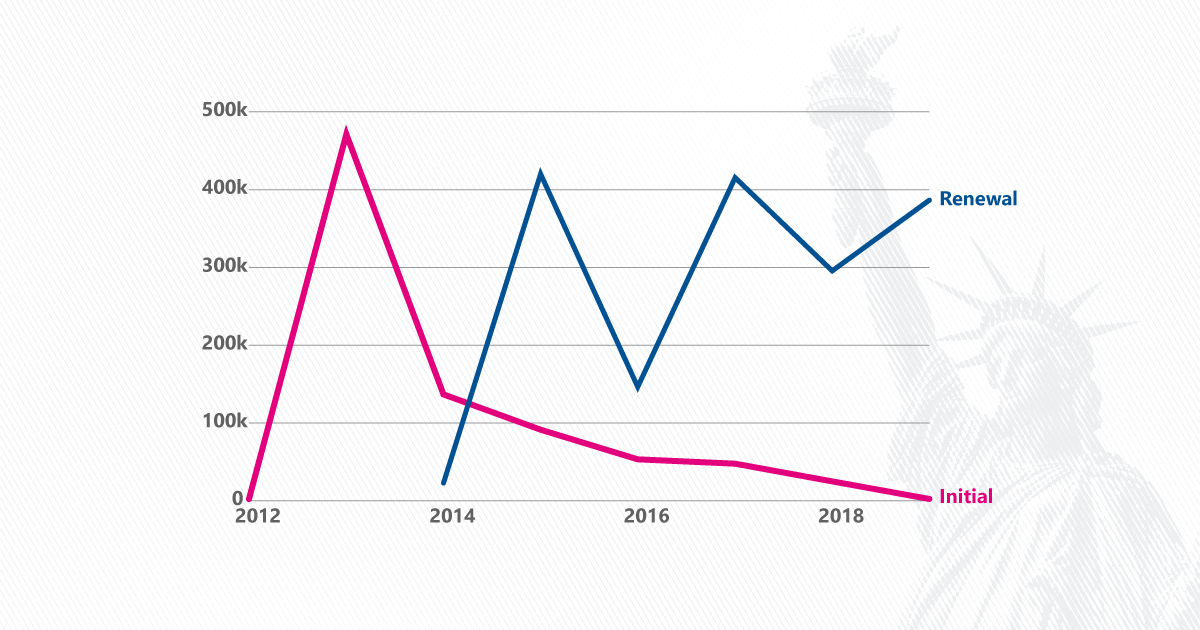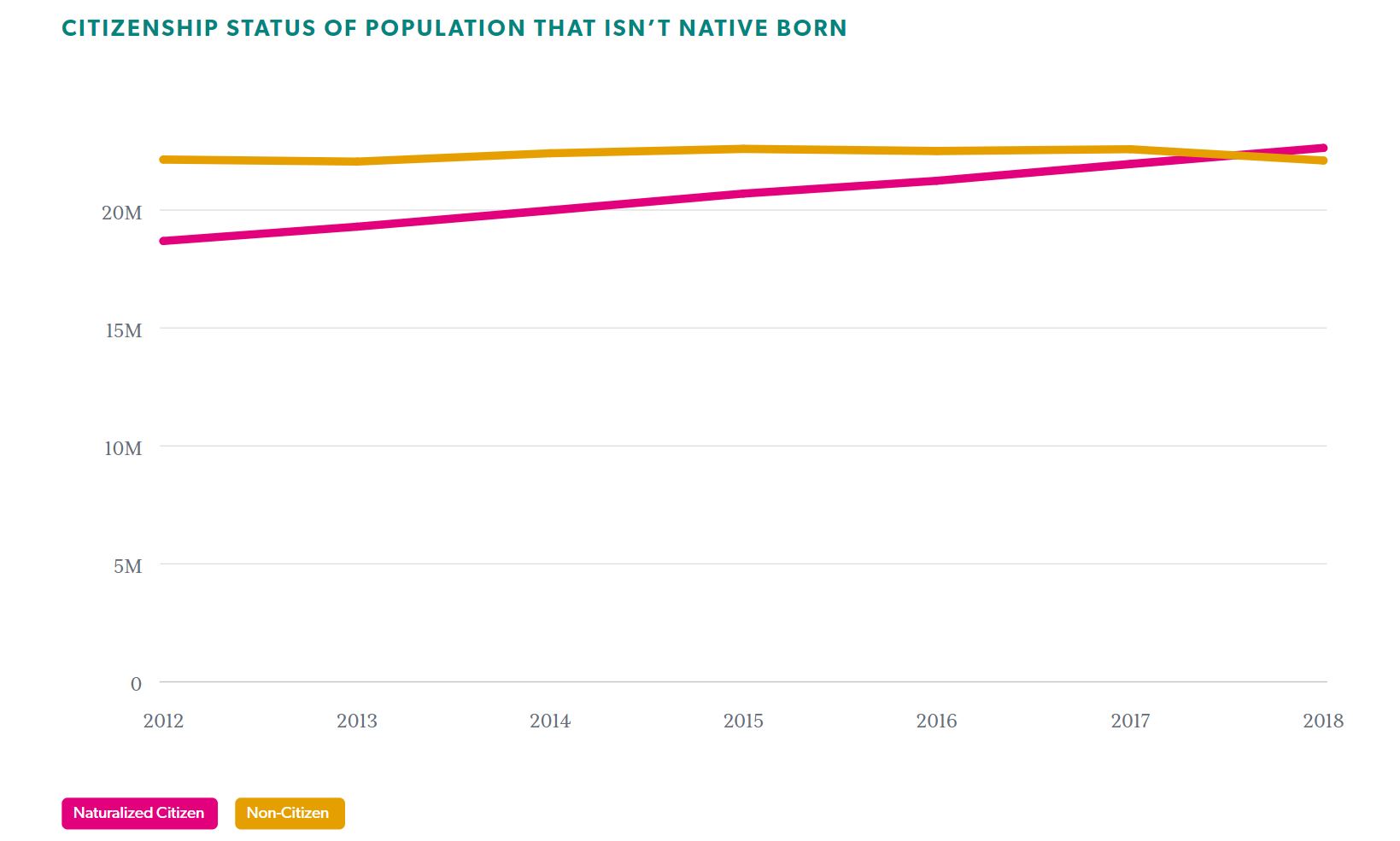Population and society
How many DACA recipients are there in the United States?

Since 2003, Immigration and Customs Enforcement (ICE) has been the division of the Department of Homeland Security responsible for enforcing federal laws governing border control, customs, trade, and immigration.
ICE was created by combining the investigative and enforcement arms of the former US Customs Service and Immigration and Naturalization Service. Today, it employs over 20,000 people across more than 400 global offices, with an annual budget of around $8 billion.
ICE’s mission is to preserve American security and public safety, mainly within US borders, by investigating and enforcing immigration laws. This primarily involves detaining, deporting, and at times convicting unauthorized immigrants.
ICE also assists investigations on transnational criminal organizations and terrorist networks that threaten or seek to exploit US customs and immigration laws.
Between October 2013 and March 2024, ICE booked approximately 3,425,920 people identified as unauthorized immigrants into detention.[1] Total book-ins were highest in 2019, at 510,850, and lowest in 2020, at 182,870. Between 2014 and 2023, detainee totals averaged about 329,600.
Mexican citizens made up the largest portion of those booked between October 2013 and March 2024, at 1,074,090 people or 31.4% of detainees, followed by Guatemalans (17.4%) and Hondurans (12.9%).
According to ICE data approximately 589,870 people, 29.3% of all detention book-ins, between October 2017 and March 2024, had a criminal record in the US.
In 2023, 41.5% of criminal detainees had been convicted of misdemeanors, 35.6% of felonies, and 18.7% of aggravated felonies.[2] The remaining crimes fell under other categories or were unknown.
ICE can detain individuals under two main categories: discretionary and mandatory. The Immigration and Nationality Act (INA) gives ICE discretionary authority to detain people awaiting a decision on their removal from the US but can choose to release them on a minimum $1,500 bond or under supervision if they are not considered a flight or security risk. ICE can also choose to assign these detainees to one of its Alt to Detention programs to ensure they appear at their hearings.
Conversely, it’s mandatory for ICE to detain unauthorized immigrants who have committed serious crimes, such as those involving terrorism or moral turpitude (defined as conduct that shocks the public conscience as being inherently base, vile, or depraved) once they’re released from criminal custody. These individuals are generally not eligible for bond release but can request that an immigration judge review whether they truly fall into mandatory detention categories.
Between October 2013 and March 2024, ICE returned approximately 2,000,730 people back to their country of citizenship.[3] Removals and returns were highest in 2014, at 315,940, and lowest in 2021, at 59,010; overall, ICE removed an average of about 200,073 people a year between fiscal years 2014 and 2023. So far in FY 2024, (October 2023 to March 2024), ICE has removed or returned 132,870 immigrants.
A majority of those removed or returned in the past decade were Mexican citizens, at 1,129,820 people, or 53.0% all ICE removals and returns, followed by Guatemalans (17.0%) and Hondurans (12.0%).
According to ICE detention center management data, detainees are held 105 different holding centers across the US, 31.4% of which were in states along the US-Mexico border; additional available facilities were empty at the time of reporting. Some facilities are operated directly by ICE, while others are run by local government entities or independent contractors.
The ICE detention centers holding the most people include:
All detention facilities must comply with National Detention Standards and Performance-Based National Detention Standards along with specific standards for family residential and temporary housing, to ensure the provision of necessary services and a secure environment for staff and detainees. ICE and the Department of Homeland Security maintain strict oversight through daily reviews and compliance programs.
Detention practices focus on securing detainees' presence for immigration proceedings. Detainees who aren’t considered a flight risk or public safety threat may be released if they have extenuating circumstances like health concerns or family responsibilities.
Detention centers focus on individuals; for families, ICE has shifted from housing family units in long-term facilities to shorter stays and eventually ceased holding families, favoring alternatives to detention. The care of unaccompanied children is managed by the Department of Health and Human Services, following specific legal guidelines.
This data comes from the Office of Homeland Security Statistics Immigration Enforcement and Legal Processes Monthly Tables dataset, which includes ICE Enforcement and Removal Operations by citizenship, criminality, and initial arresting agency. Additionally, the information for ICE detention facilities comes from the organization’s Detention Management page.
Learn about why immigrants come to the US, and get the data directly in your inbox by signing up for our email newsletter.
According to ICE data, these figures are rounded to the nearest ten.
Data on the criminal records of detainees does not exist prior to FY 2022.
Those who cannot return to their country of citizenships due to “natural disasters,” “extraordinary temporary conditions,” or “ongoing armed conflict,” are granted temporary protected status until safe passage to their home country can be attained. This status does not necessarily lead to lawful permanent resident status or give any other immigration status. Sixteen countries are currently designated for TPS, including Afghanistan, Ukraine, and Venezuela.
Population and society
Population and society
Population and society
Population and society
Newsletter
Keep up with the latest data and most popular content.


